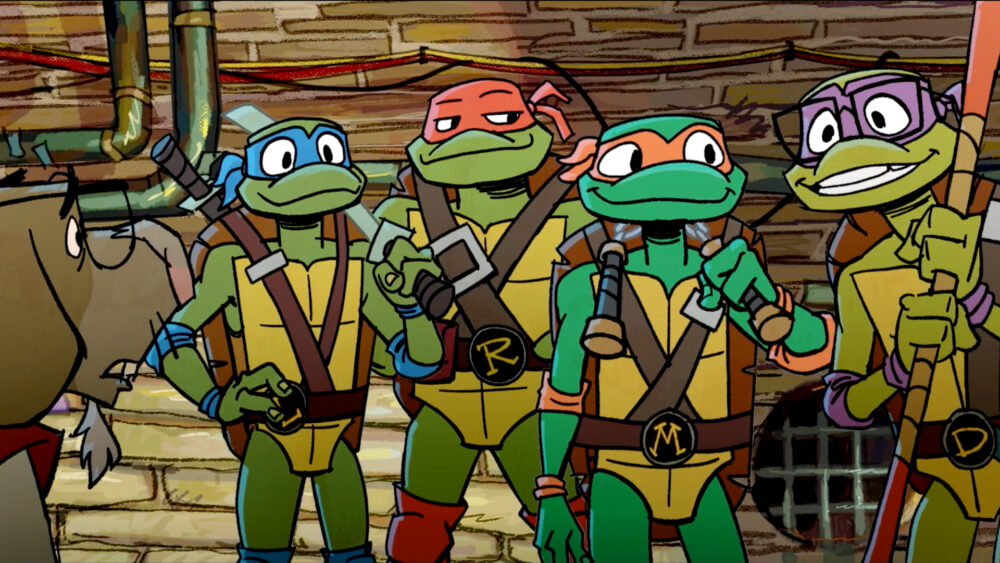Anyone who watches a show for more than one season comes to the inevitable tragedy; your favorite side character leaves a show. No, I’m not talking about when it falls in line with the plot of the narrative; i.e. Gus on Breaking Bad or anyone you love on Game of Thrones. I’m talking about when either contract negotiations go sour or an actor leaves a show to pursue another opportunity, or frankly, the character isn’t working, and they just disappear.
Now, there are two ways to handle this: one is to not acknowledge it whatsoever. Very few people realize that Richie Cunningham on Happy Days had an older brother, Chuck. He went upstairs, never to return, and no one was the wiser. Another great example was Family Matters. Judy, Laura and Eddie’s little sister, just… wasn’t on the show anymore, then Aunt Rachel disappeared, then Grandma Winslow… without any kind of explanation. I guess the rest of the Winslows were just too distracted by the antics of the nerdy neighbor Steve Urkel to notice their family was dwindling. My bet is Urkel was the culprit serial killer, but enough of my FMFF (that’s Family Matters Fan Fiction for short)
The other option, and my personal favorite, is have the characters not only acknowledge cast changes, but to make fun of them. Anyone who has binge watched The New Girl has seen this in the character Coach, played by Damon Wayans. Coach was in the pilot, but was replaced on the second episode by Bishop, played by Lamorne Morris. There are a slew of examples of the writers mocking this, one case where Nick Miller tells his future self, “Don’t be mean to Coach, or he’ll leave us for another group of white people,” which, actually happened. Wayans left the cast of Caucasians on New Girl to be the token black cast member on Happy Endings.
Boy Meets World did this type of thing in spades. Morgan Matthews, Corey and Eric’s little sister, was absent for several seasons. She suddenly came down the stairs, and Corey, aghast, says, “Morgan, long time no see.” Morgan responds, “Yeah. That was the longest time out I’ve ever had.” Two years. No kidding.
The show also had Minkus, the arch-rival dweeb who had stopped appearing after the main characters went into high school. Then, as Corey and Shawn are reminiscing about the friends they may have lost touch with, the camera pans to Minkus. He says that he’s been in the other part of the school and points off camera, then runs to greet Mr. Turner, another mainstay character who had disappeared two years before. It’s season 5, episode 24. I highly recommend you check it out.
Altogether, I don’t envy any writer who has to ax a character for the wrong reasons, but I applaud those who give their audience at least a half-hearted or even comical reasoning as to why a character leaves. I mean, that’s a writer’s job, right? That’s my Entertainment, what’s yours?
Written by: John Stiens

Events
Paramount+ Reveals Official Main Title Sequence for the Upcoming Series TALES OF THE TEENAGE MUTANT NINJA TURTLES

During the TALES OF THE TEENAGE MUTANT NINJA TURTLES panel earlier today at San Diego Comic Con, Paramount+ revealed the official main title sequence for the series. The sequence is composed by EMMY® nominee, Matt Mahaffey, known for his work on Sanjay and Craig, Rise of the Teenage Mutant Ninja Turtles, and Rise of the Teenage Mutant Ninja Turtles: The Movie and much more.
From the studios of the Mutant Mayhem film, the all-new Paramount+ original series TALES OF THE TEENAGE MUTANT NINJA TURTLES explores the adventures of everyone’s favorite pizza-loving heroes as they emerge from the sewers onto the streets of NYC. Leo, Raph, Donnie and Mikey are faced with new threats and team up with old allies to survive both teenage life and villains lurking in the shadows of the Big Apple. The series is produced by Nickelodeon Animation and Point Grey Pictures.
TALES OF THE TEENAGE MUTANT NINJA TURTLES is executive produced by Chris Yost (The Mandalorian, Thor: Ragnarok) and Alan Wan (Blue Eye Samurai, Rise of the Teenage Mutant Ninja Turtles, Teenage Mutant Ninja Turtles [2012 Series]). Production is overseen for Nickelodeon by Claudia Spinelli, Senior Vice President, TV Series Animation, Nickelodeon, and Nikki Price, Director of Development and Executive in Charge of Production.
In addition to the upcoming new series, stream all things Turtles on Paramount+.
Events
Comic-Con 2024: Those About to Die Activation
Events
DISNEY+ CASTS DANIEL DIEMER AS FAN-FAVORITE ‘TYSON’IN SEASON TWO OF “PERCY JACKSON AND THE OLYMPIANS”

in Hall H at San Diego Comic-Con, Rick Riordan and Disney+ revealed that Daniel Diemer (“Under the Bridge”) will star as fan-favorite cyclops “Tyson” in the epic adventure series “Percy Jackson and the Olympians.” Diemer joins Walker Scobell (Percy Jackson), Leah Sava Jeffries (Annabeth Chase) and Aryan Simhadri (Grover Underwood) as a series regular. The Disney+ Original series from Disney Branded Television and 20th Television will start filming its second season next week in Vancouver.
Season two of “Percy Jackson and the Olympians” is based on the second installment of Disney Hyperion’s best-selling book series titled “The Sea of Monsters” by award-winning author Rick Riordan. In the new season, Percy Jackson returns to Camp Half-Blood one year later to find his world turned upside down. His friendship with Annabeth is changing, he learns he has a cyclops for a brother, Grover has gone missing, and camp is under siege from the forces of Kronos. Percy’s journey to set things right will take him off the map and into the deadly Sea of Monsters, where a secret fate awaits the son of Poseidon.
Diemer stars as Tyson – a young Cyclops who grew up all alone on the streets, and finds it difficult to survive in the human world. Shy and awkward, with a heart almost as big as he is, Tyson soon discovers that Poseidon is his father, which means Percy Jackson is his half-brother… and that Tyson may have finally found a home.
Diemer recently starred in the Hulu limited series “Under the Bridge” based off the critically acclaimed book of the same name and a tragic true story of a missing teen girl in Vancouver in 1997. He will next star in the indie “Thug” opposite Liam Neeson and Ron Perlman for director Hans Petter Moland. Daniel was recently seen as the lead in the indie “Supercell” opposite Alec Baldwin and Skeet Ulrich and the lead in the film “Little Brother” opposite Phil Ettinger and JK Simmons. Daniel can also be seen in the Netflix series “The Midnight Club” and recently starred as the male lead in the breakout hit Netflix feature “The Half Of It” from producer Anthony Bregman and director Alice Wu. He is a graduate of Victoria Academy of Dramatic Arts in Vancouver.
Created by Rick Riordan and Jonathan E. Steinberg, season two of “Percy Jackson and the Olympians” is executive produced by Steinberg and Dan Shotz alongside Rick Riordan, Rebecca Riordan, Craig Silverstein, The Gotham Group’s Ellen Goldsmith-Vein, Bert Salke, The Gotham Group’s Jeremy Bell and D.J. Goldberg, James Bobin, Jim Rowe, Albert Kim, Jason Ensler and Sarah Watson.
The first season of “Percy Jackson and the Olympians” is available on Disney+
-

 Interviews1 day ago
Interviews1 day agoInterview With Heroes & Villains Creative Director Doug Johnson
-

 Streaming1 day ago
Streaming1 day agoApple TV+ announces season two for delightful kids and family series “Camp Snoopy
-

 Events1 day ago
Events1 day agoThat’s My E Coverage Of The Adult Swim’s Pirate Parrrty
-

 Events12 hours ago
Events12 hours agoParamount+ Reveals Official Main Title Sequence for the Upcoming Series TALES OF THE TEENAGE MUTANT NINJA TURTLES
-

 Events16 hours ago
Events16 hours agoDISNEY+ CASTS DANIEL DIEMER AS FAN-FAVORITE ‘TYSON’IN SEASON TWO OF “PERCY JACKSON AND THE OLYMPIANS”
-

 Interviews16 hours ago
Interviews16 hours agoComic-Con 2024: Will Wight’s Cradle
-

 Events15 hours ago
Events15 hours agoComic-Con 2024: Those About to Die Activation


